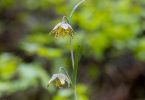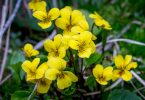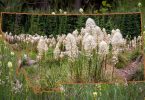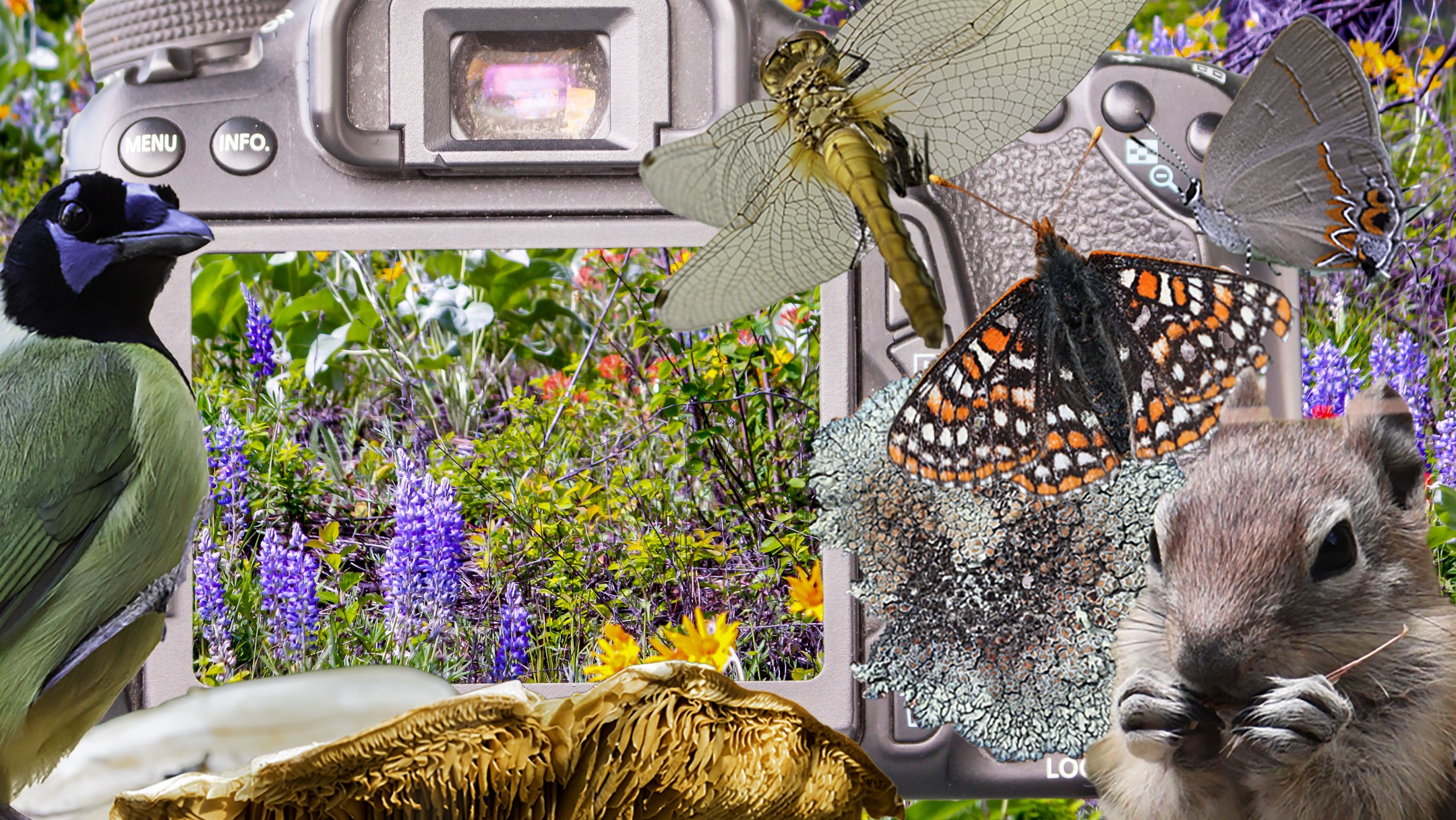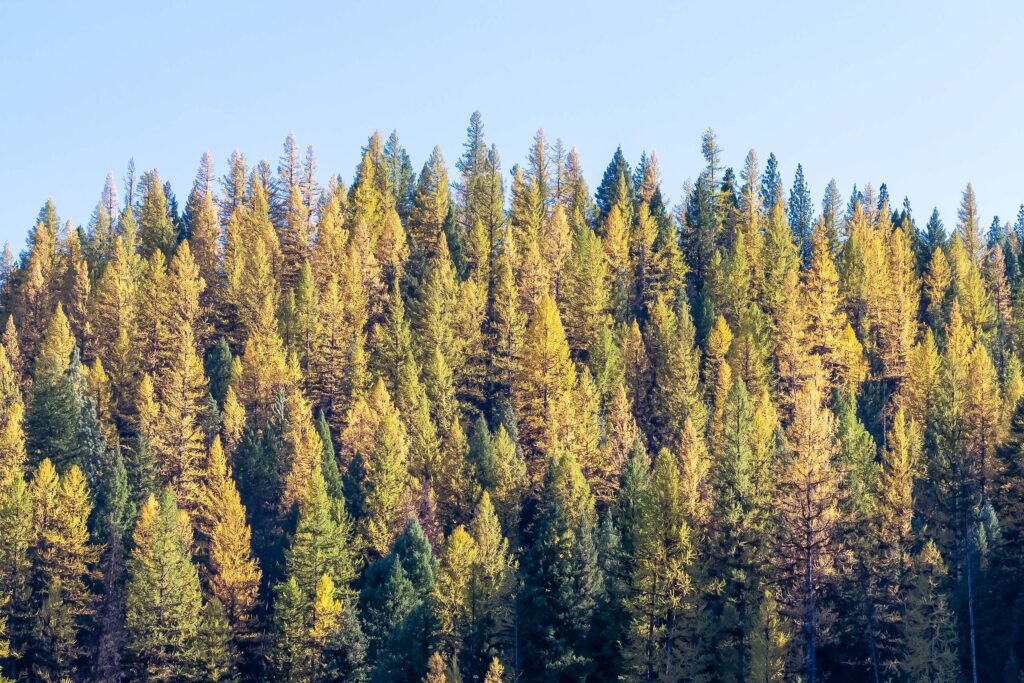
Biology of fall colors
“A warm wet spring, favorable summer weather, and warm sunny fall days with cool nights should produce the most brilliant autumn colors” (USDA/Forest Service – Science of Fall Colors retrieved 11-11-24). The sentence generalizes variables applicable to deciduous trees of the eastern U.S. From my perspective, Western Larch (Larix occidentalis) not similar in reaction. Seems year in/year out Western Larch are a bright golden color here in western Montana. The needle process from green to gold to dropping to ground is still going (second week of November).
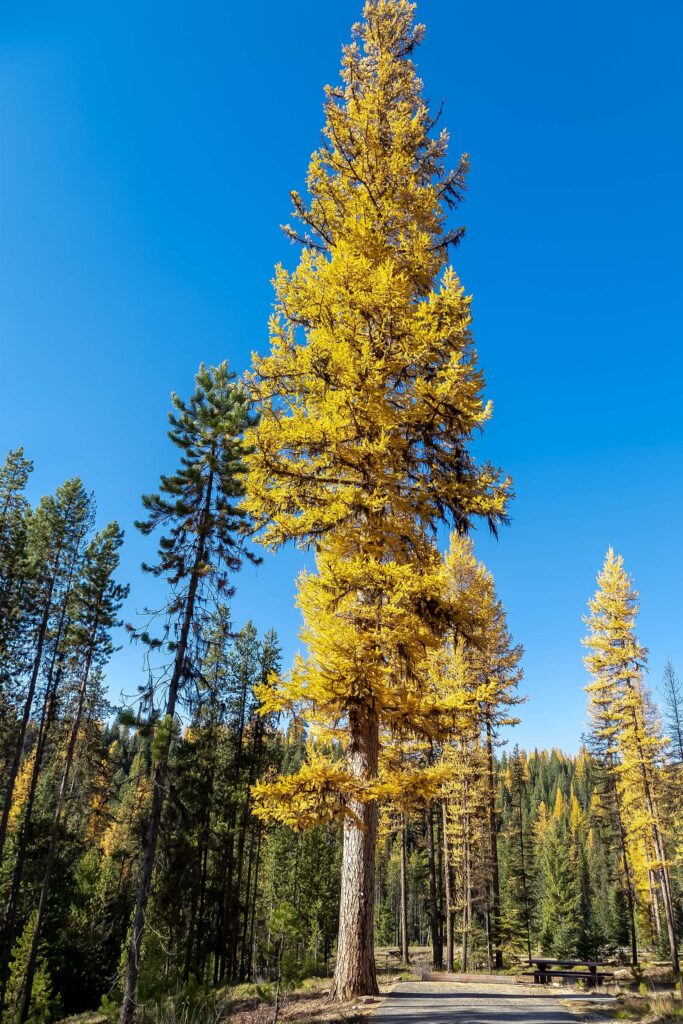
Mechanisms
Larch needles act much like deciduous leaves. Deciduous describes few other conifer species (Washington D.N.R. – Western Larch n.d. pdf retrieved 11-11-24). Chlorophyll degrades as daylight hours shorten. As such, green wavelengths of light no longer reflect away from the plant. This increasingly allows the underlying carotenoids of beta carotene and lutein pigments in the needle to show through their yellowish coloring (Methow Naturalist – The Beauty and Biology of Larch n.d. pdf retrieved 11-11-24).
Nutrients withdraw from the needles stored back in the tree. Most interesting is the degree of nitrogen shifted back into the tree. Needles measure 1 part nitrogen to 50 parts carbon in the forest floor duff. Compare this ratio to 1 part nitrogen:16 parts carbon of other conifer species. Nitrogen is hard to come by in forest soils (Methow Naturalist – The Beauty and Biology of Larch).

Physical Form
Deeply furrowed bark of old trees approach a thickness of 14 inches. And the bark color changes over time. Branching changes too. Branches drop off for most of the height of the tree shade induced. Needles number 15 to 30 per spur measuring 2–5 cm long and 3-angled in shape. Seed cones look brown to reddish and 25–40 mm long (Montana Field Guide – Western Larch (Larix occidentalis) retrieved 11-11-24). Dense stands of these trees not unusual (Washington D.N.R. – Western Larch).

Habitat & Distribution
Look for this tree species in the Pacific Northwest, mostly centered on Idaho and northwest Montana. The oldest specimen, about 1,000 years old, found in Seely Lake, Montana (Wikipedia – Western Larch retrieved 11-11-24) . This larch species Inhabits cool, moist slopes of mountain ranges. Displaces Ponderosa Pine (Pinus ponderosa) in places considered colder.
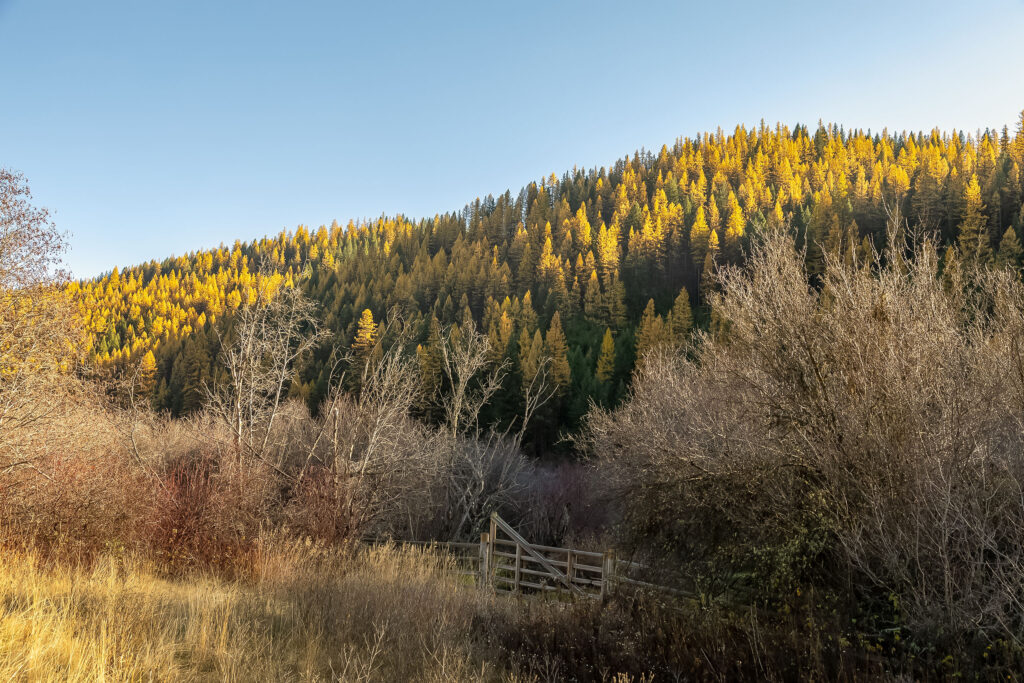
Bucket list hotspots – where, when
Douglas A. Schmittou posted (10-24-24) in Distinctly Montana – Larch Madness: Fall-Foliage Destinations in Northwestern Montana. He outlined two superior spots in/around North Fork of Glacier National Park and the Seeley Swan Valley for prime viewing of larch. In particular is the James Girard Memorial Grove at the south end of Seeley Lake where it exits into the Clearwater River. It is here where “Gus” (on the registry of Champion National Trees), the largest/oldest Western Larch resides. It is 153 feet tall with a circumference of 22 feet 9 inches.
The golden color of larch peaks typically in the last two weeks of October. Good viewing also found during early November given cooperative conditions. Make sure you have your camera or smartphone ready to record the brilliant landscape. Good luck 🙂

